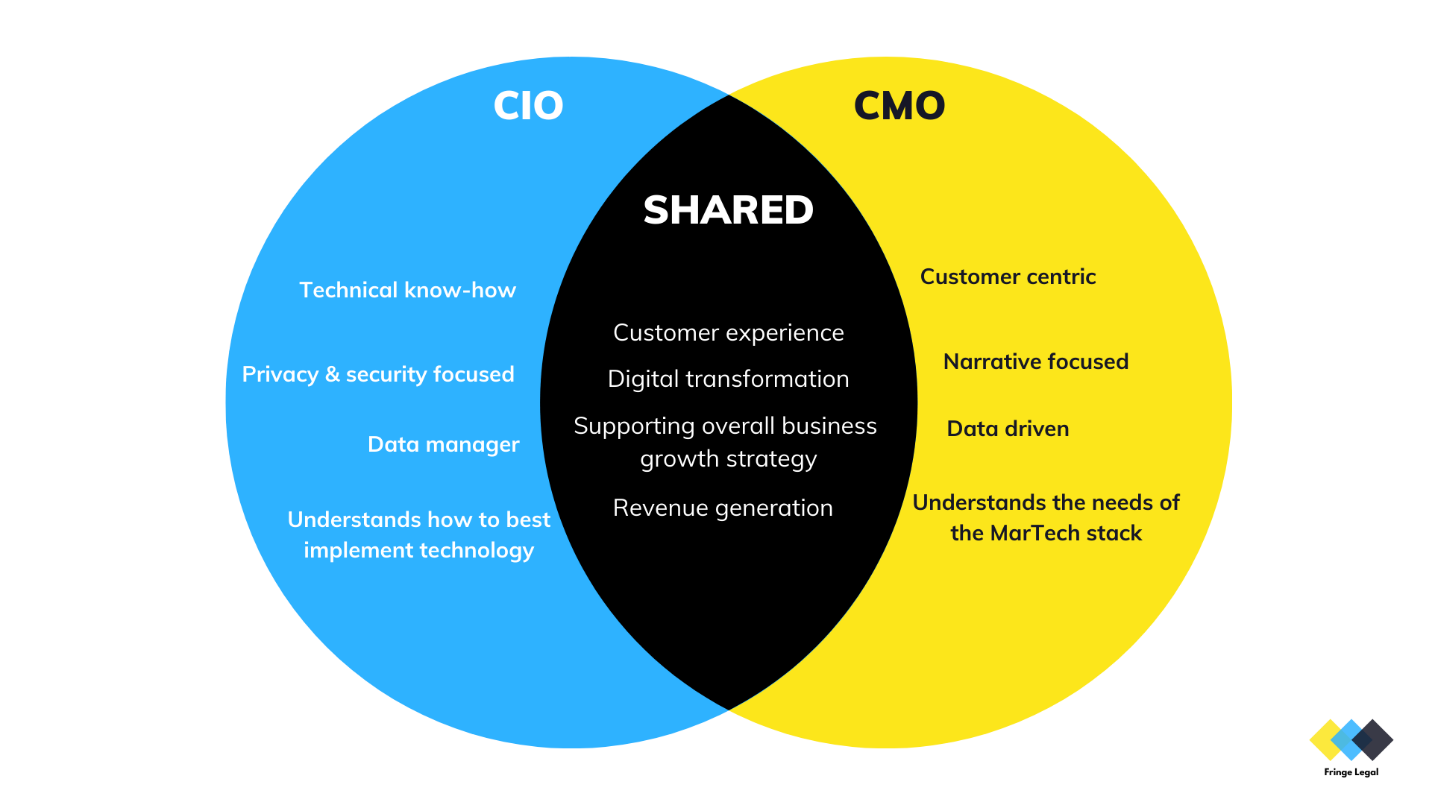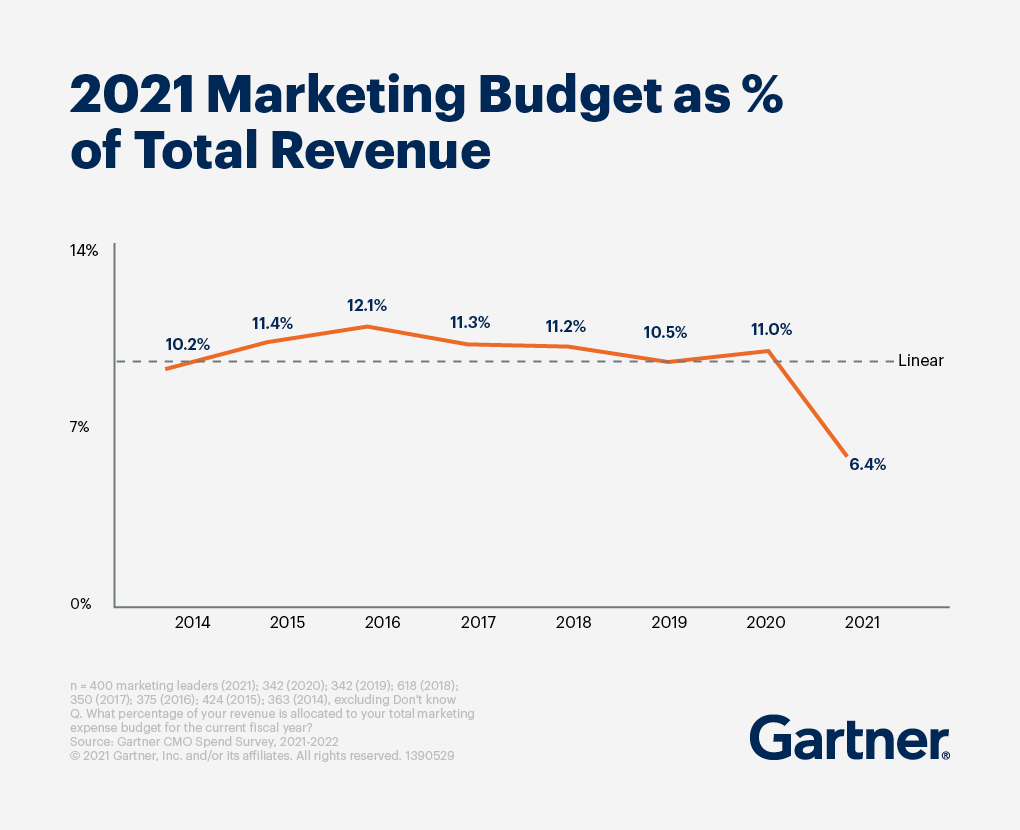How to Manage the CIO-CMO Relationship
By Abhijat Saraswat
October 28, 2021 | 7-minute read
Client Services Project Management Content Type Article Additional Options Content Level: Essential
Marketing Management & Leadership
Technology has changed how companies are run, how they communicate and how they compete. In the past decade, firms have dramatically broadened their use of technology in digital operations. As initiatives continue to grow and increase in complexity, they also create the need for more senior-level roles to help make the most of these new technologies. In recent years, the chief information officer (CIO) role has risen in prominence, and the chief marketing officer (CMO) in importance. Therefore, a close collaboration between the CIO and CMO will allow their teams to drive more and varied innovation initiatives, improve the client experience and find novel revenue generation ideas to implement.
Speak to business leaders from any part of your firm or company and you will likely hear common objectives focused on digital transformation, improving the customer experience and leveraging data to drive revenue generation. As data and technology become more important, it may seem that there would be increased collaboration between IT and marketing.
However, the CIO-CMO pair is often highlighted as an example of how teams ought not to act. A recent study by KPMG and supported by the CMO Council found that only 23% of marketing organizations have a "very effective" relationship with IT.
Why, you might ask? CIOs and CMOs have traditionally relied on their teams, often lacking awareness of each other's goals. Improving the CIO-CMO relationship can act as a force multiplier to the firm.
The Changing Role of the CIO
Previously, IT was seen as the "tech team" focused on resolving desktop issues and clearing support tickets — that is no longer the case. With greater focus than ever on innovation, privacy, security and leveraging data, the role of an IT leader has never been more important.
IT is no longer the back-office function. In many organizations, the role of the IT team has shifted from a technology service provider — a cost center — to a strategic partner in driving the firm's success.
The CIO can be a valuable ally to the marketer in a firm. Why does this matter? Because marketers who have an effective relationship with IT can:
- More actively pursue innovation initiatives
- Better leverage data and insights to assist decision making
- Plan and budget over a longer period of time
Natural Allies for Revenue Growth
While it may seem like an unlikely pairing, the CIO and CMO are natural allies. Although there isn't much overlap in the skill sets of the two roles, they each support complementary objectives such as customer experience, driving digital transformation initiatives, and facilitating revenue generation at the firm.

The CIO and CMO are natural allies. There is not much overlap in the skill set, but they drive shared objectives.
Both the IT and marketing teams drive revenue growth for the business. The CIO achieves this by supporting the legal professionals and leveraging technology. The CMO often looks to drive revenue efforts by promoting initiatives (internal and external) and highlighting narratives that demonstrate increased client value. Combining the domain expertise could lead to a dramatic improvement across the firm.
Marketers are not generally data privacy experts, but data privacy is a critical component of many technologies that fall under the purview of the marketing team. In this instance, the CIO can be a valuable resource, helping to avoid the risk associated with technology selection and helping navigate the ever-changing regulatory environments.
Proving a return on investment (ROI) is always a challenge that burdens every IT team. Even in instances where ROI has been demonstrated, increasing awareness of the successes is difficult. For the IT team, working closely with the marketing team can help create buzz internally about technology and help launch external campaigns that assist with revenue-generating goals.
Having the CIO and CMO work together on revenue generating goals ensures that the right technology is being leveraged in the best way, data is stored in a compliant manner and there is scope to scale in line with organizational objectives.
The CIO-CMO relationship will be a major contributing factor in ensuring a firm executes its digital transformation, innovation and growth strategies.

Winning Together
Unifying the IT and marketing teams and having them work more closely together has many advantages; however, achieving cohesion requires work. Below are three tactical ways to improve the CIO-CMO relationship in law firms and project the future for the partnership.
No More Silos
Silos exist even at the very top of the organization — you must set an example and establish clear directions for your teams when coming together. Go beyond just partnering to create a jointly-owned shared services hub or a center of excellence (these are joint efforts backed by committed resources).
When breaking down the IT and marketing silos, one tip is to minimize the use of jargon (or acronym soup) which can create unnecessary barriers to communication. Unify your teams under a shared vocabulary to empower them to become collaborative powerhouses.
Responsibilities and Responsiveness
Set a clear delineation of responsibilities. For example, with regards to technology selection for the marketing organization, the CMO retains the choice with the CIO guiding the method of deployment, data governance and service level agreements (SLAs) to ensure uptime.
Marketing teams need to promptly respond to emerging customer trends and trust their IT counterparts to support and scale use cases into new business opportunities. If leveraging a shared hub or center of excellence, be sure to set expectations on turnaround and capacity.
Grow the Budget Opportunities
Marketing spend is one of the biggest budget items across organizations, but have started to become constrained. Gartner reported that in 2021 marketing revenue fell from 11% to 6.4% (see the chart below).
With marketing and IT working together to draft a singular proposal, there is an opportunity to increase the size of the budget available. (This is especially relevant with the rise of consolidators in the legal market that can service both IT and marketing requirements.) Not only does a single proposal allow for a bigger ask from the budget, but it also comes with built-in support from another C-suite, increasing the likelihood of approval.

Looking Ahead
The CIO-CMO relationship will be a major contributing factor in ensuring a firm executes its digital transformation, innovation and growth strategies. There is a natural, longer-term trend in the two teams working more closely together. Where organizations have found success already, there is scope for continued improvement.
Even tighter integration is possible in the form of an embedded chief marketing information officer (CMIO) in mature firms, to ensure that the IT and marketing teams are collaboration powerhouses driving success for the entire firm. The CMIO role is not simply an IT role; this leader would be embedded in the marketing organization reporting to the CMO and be charged with tech stack management, supporting marketing integrations and ensuring that the marketing team is better integrated across the firm's IT infrastructure. It's a new position, and it poses challenges for those who fill it, but it's a position that can bring great value to a company and its leadership.
The CIO and CMO must collaborate in preparing for the future. By leveraging new technologies and data, the CIO and CMO can combine the art of marketing and technology of IT to create a new level of customer experience that can accelerate business growth and spur innovation.